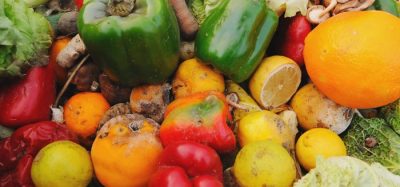Climate change research predicts rice yields to fall and arsenic to rise
- Like
- Digg
- Del
- Tumblr
- VKontakte
- Buffer
- Love This
- Odnoklassniki
- Meneame
- Blogger
- Amazon
- Yahoo Mail
- Gmail
- AOL
- Newsvine
- HackerNews
- Evernote
- MySpace
- Mail.ru
- Viadeo
- Line
- Comments
- Yummly
- SMS
- Viber
- Telegram
- Subscribe
- Skype
- Facebook Messenger
- Kakao
- LiveJournal
- Yammer
- Edgar
- Fintel
- Mix
- Instapaper
- Copy Link
Posted: 1 November 2019 | Sam Mehmet (New Food) | No comments yet
Stanford University researchers have simulated predicted environmental conditions of the year 2100, and results have shown a decrease in rice yields and a rise in toxic arsenic levels in rice due to increased temperatures.


New experiments from Stanford University have suggested that with climate change, production in major rice-growing regions with endemic soil arsenic will undergo a dramatic decline and jeopardise critical food supplies.
These experiments exploring rice production in future climate conditions show rice yields could drop by about 40 percent by 2100 – with potentially devastating consequences in parts of the world that rely on the crop as a basic food source.
The researchers created future climate conditions in greenhouses based on estimates of a possible 5°C temperature increase and twice as much atmospheric carbon dioxide by 2100, as projected by the Intergovernmental Panel on Climate Change.
Changes to soil processes due to increased temperatures is also predicted to cause rice to contain twice as much toxic arsenic than the rice consumed today.
“We do not often think about this, but soil is alive – it is teeming with bacteria and a lot of different microorganisms,” said co-author of the study Scott Fendorf, the Terry Huffington Professor in Earth system science at Stanford University’s School of Earth, Energy & Environmental Sciences (Stanford Earth). “It turns out those microorganisms determine whether the arsenic stays partitioned onto the minerals and away from the plants or comes off the minerals into the water phase.
“By the time we get to 2100, we are estimated to have approximately 10 billion people, so that would mean we have 5 billion people dependent on rice, and 2 billion who would not have access to the calories they would normally need. We have to be aware of these challenges that are coming so we can be ready to adapt.”
The researchers specifically looked at rice because it is grown in flooded paddies that help loosen the arsenic from the soil and make it especially sensitive to arsenic uptake. Future changes in soil due to higher temperatures combined with flooded conditions cause arsenic to be taken up by rice plants at higher levels – and using irrigation water with naturally occurring high arsenic exacerbates the problem. While these factors will not affect all global commodities in the same way, they are said to extend to other flood-grown crops, like taro and lotus.
“I just did not expect the magnitude of impact on rice yield we observed,” said Fendorf. “What I missed was how much the soil biogeochemistry would respond to increased temperature, how that would amplify plant-available arsenic, and then – coupled with the temperature stress – how that would really impact the plant.
A naturally occurring, semi-metallic chemical, arsenic is found in most soils and sediments, but is generally in a form that does not get taken up by plants
“The good news is that given past advances in terms of the global community’s ability to breed varieties that can adapt to new conditions, along with revisions to soil management, I am optimistic we can get around the problems observed in our study.”
Fendorf, and other researchers now hope to asses rice yields on a global scale by using remote sensing to pinpoint contaminated rice paddies in order to model future yields and arsenic contamination.
The study was published in Nature Communications.
Related topics
Environment, Food Security, Health & Nutrition, Research & development
Related organisations
Intergovernmental Panel on Climate Change., Stanford University









